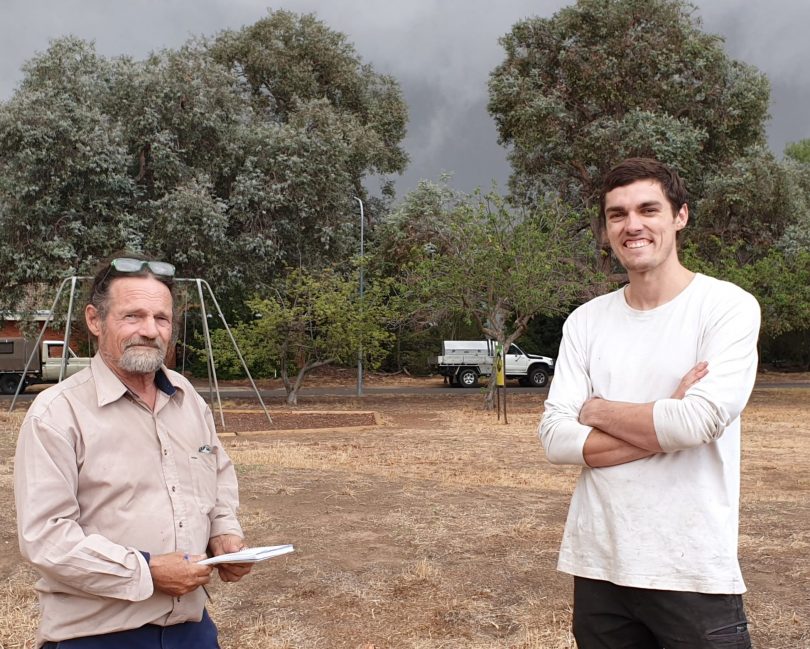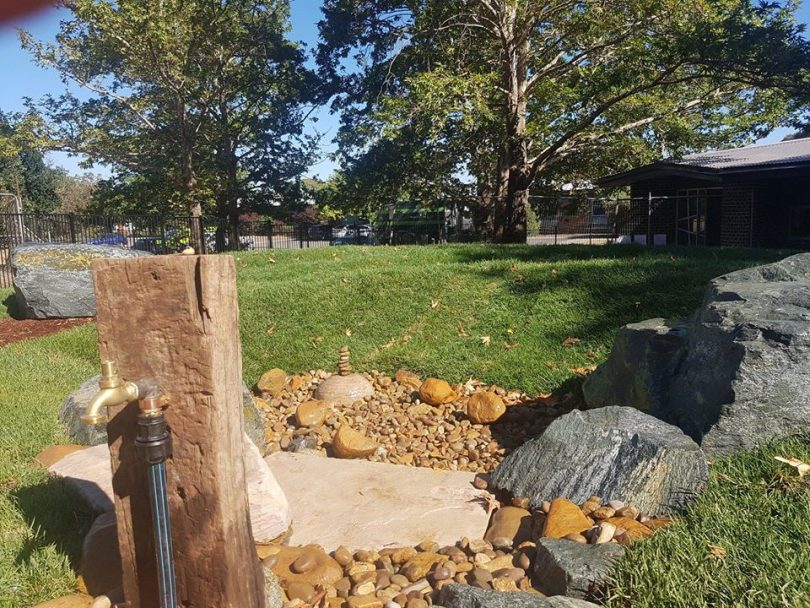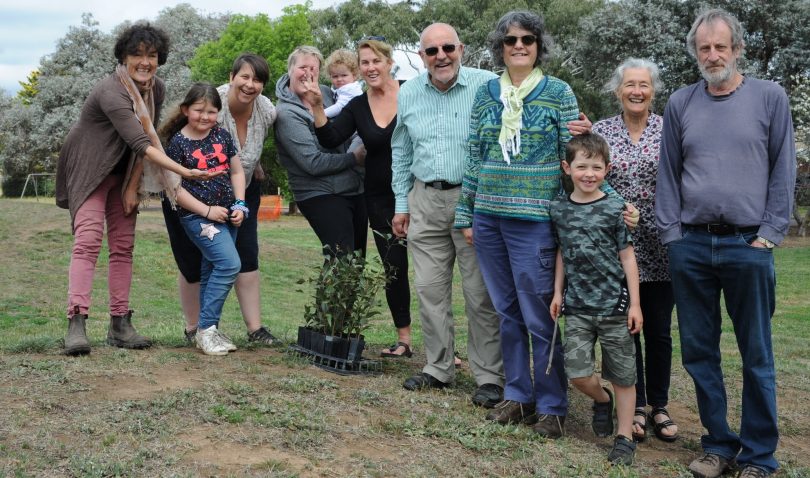
Paul Totterdell and Lachlan Richardson scope a site at Downer for a community water harvesting project. Photos: Supplied.
For Paul Totterdell, when it rains, it doesn’t necessarily pour.
A horticulturist by trade, Paul has been building water harvesting systems that he says can reshape the way we capture and recycle water, making a landscape more drought and flood-resistant.

A water harvesting system in a Canberra backyard.
Born and bred in Canberra, Paul worked with City Parks and Gardens (now ACT Parks and Conservation) and has studied water and soil systems in the Koszciusko mountains.
His water harvesting system is a simple design that consists of a series of trenches, with the bottom half filled with coarse sand and gravel to capture water and distribute it around the landscape. When the trenches are full, water overflows to normal drainage systems.

A trench system features sand and gravel to capture water.
For Paul, our traditional methods of storing water in tanks are outdated.
“We’re so behind the times with how we capture water,” Paul says.
“If you store water in the sub-soil of your landscape in your yard, then all of your plants are benefitting from it,” says Paul. “That will stand you in good stead during a drought because with a good water harvesting system, there’s always water down deep for the larger plants to survive when it’s super dry.
“You set it up in such a way that, when it rains for two weeks and your water harvesting system is full, it goes back to the existing system which means cleaner water in our waterways and creeks.
“The important thing is that any pollutants that may have been in the incoming water gets trapped and the overflow is clean to the stormwater system and the rivers.
“After a dry period, that first flush is pretty horrible, so this is one way to combat algal blooms,” says Paul.
Paul has gifted a water harvesting system to the Downer community where Edwina Robinson has crowd-funded the first of many micro-forests in Canberra.
The micro-forest is planned for the Cole St Park in Downer as a pilot project set up by Edwina’s social enterprise, The Climate Factory, and the Downer Community Parkcare Group. It’s in response to increasing temperatures in urban areas.
“The beauty of the design is its simplicity as it provides plants access to water at their roots rather than the soil surface,” Edwina says.
“It allows for a top-up watering of the system with a water cart or garden hose via infiltration points. And it also includes a shallow ‘bog’ that will be planted with native plants that can cope with wet and dry conditions.”
Subject to receiving final approvals from the ACT Government, the weather being kind and COVID-19 staying away, earthworks for the water harvesting trenches at Downer are scheduled to start this month. Working bees will be open to the public later in September.

The Climate Factory founder Edwina Robinson (far left) with Downer Community Parkcare Group members. Photo: Gary Marshall.
Paul says a water harvesting system could be built under any landscape, including bowling greens or micro-forests.
“It’s just a way of getting the water under the ground and holding it there so the plants have access to it by various forces such as seepage and capillary trenches.”
Paul says we are too reliant on capturing water in tanks and stormwater drains.
“If everybody holds water in a tank the same way they hold money in a bank for a rainy day, so to speak, the water is sitting in the tank and the plants can’t get at it.
“It’s benefitting nobody until some human makes the decision to turn the tap on,” Paul says.
“The natural systems have been doing it forever and a day and it’s only now that we are recognising that.”
For more information about water harvesting, visit Natural Landscapes.
Original Article published by Michael Weaver on The RiotACT.

